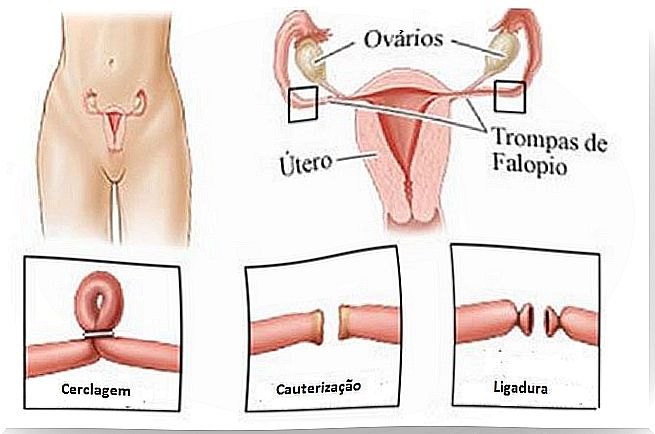Can I Get Pregnant If My Tubes Are Connected?

The tubal ligation procedure is a very common method of sterilization. However, like any surgical process, it raises doubts and even bigger ones when it comes to contraception. Having the tubes connected implies that we have decided to end our reproductive capacity almost permanently. Although considered an effective sterilization mechanism, it is known to be a risky method.
The tubal ligation is applied to those women who have decided not to have any more children, because it is a permanent method. It is a simple outpatient procedure that can be performed in different ways. A woman can schedule her ligation any day, including at the time of giving birth.
There are currently techniques that allow surgery to be performed through laparoscopy, one of the simplest. Through this surgical process, the passage of eggs from the ovaries to the uterus is prevented. The ends etched into the fallopian tubes have a lasting effect, but sometimes the procedure fails.
The tubal ligation is permanent
This method cannot be considered reversible or temporary, so it is important to plan well. The main patients are those women who do not wish to become pregnant in the future. In addition, it is also recommended for women who are over 40 years old and who have a history of ovarian cancer.

Many women have regretted the decision to undergo this surgery, especially because of its effectiveness. However, it is also known that one in two hundred women can become pregnant again after tubal ligation. In other words, the process is not definitive, as the incidence rates are actually very low.
Thus, it is not enough to just perform this surgery and assume that we will never have to worry about getting pregnant again. Experts recommend observing to establish the progress of the procedure, as there are other risks. According to the data, a woman undergoing this intervention, in addition to being likely to be pregnant in the future, is also exposed to the following:
. Increases the risk of ectopic pregnancy
. Complete closure of the tubes (in case of hysteroscopic procedure)
. Damage to tissues or adjacent organs in the intervention zone, in this case as a product of contact with surgical material.
. Consequences of general anesthesia.
. Pain from accumulation of surgical gas.
. Anomaly in the menstrual cycle.
When the intervention is performed using a hysteroscope, experts recommend that the woman continue using an alternative method of contraception until the success of the intervention is verified. In this case, an assessment called hysterosalpingography is required, which is performed three months after the intervention.
In this way, it is possible to reverse the intervention, through a procedure called recanalization. Recanalization is also performed surgically and consists of detaching the tube from the fallopian tubes again. When recanalization is performed, the chances of pregnancy are re-established, only this time the in vitro fertilization process is recommended.

How do you know if the tubal ligation worked?
Our doctor will always be able to make an assessment that will let us know how everything is. For example, if the channel has not closed completely, it can warn us of the risk. If necessary, we may have to continue taking contraceptives or any other option.
In case we are from the group that regretted the procedure, some tests will inform us about our status. It is believed that the reversal of the intervention is always applied and when the ends closest to the ovaries remain intact. For this, it is necessary that there is a length of at least 4 centimeters of the channel in operation.
However, if tube extirpation was complete, it is possible that reversal is considered impossible. Likewise, over the years, pregnancy is considered more risky in the case of tubal ligation. In this way, we statistically speak of odds of 1 in 1000 during the first year, but it increases between 2 and 10 of every thousand after the five years of intervention.









